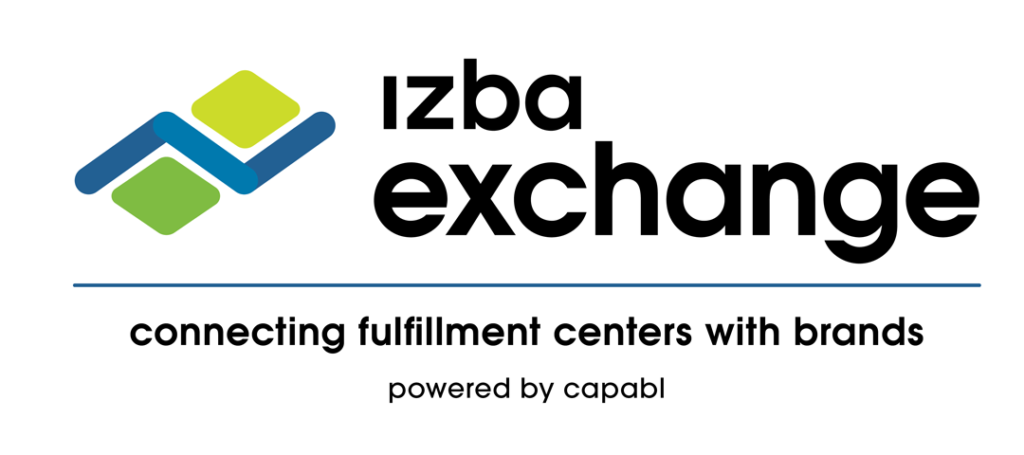
The retail industry faces numerous inventory challenges that can have a significant impact on business operations and overall profitability. From stockouts and overstocking to excess inventory and deadstock, retailers must effectively manage their inventory to ensure efficient supply chain management and customer satisfaction. In this article, we will explore the various inventory challenges faced by retailers and delve into strategies and solutions to address these issues.
Stockouts and Overstocking
Stockouts and overstocking are two common challenges that retailers encounter when managing their inventory. These issues can have a significant impact on a retailer’s bottom line and customer satisfaction. Let’s take a closer look at each of these challenges and explore some strategies to address them effectively.
Stockouts:
Stockouts occur when a retailer runs out of a particular product, leaving customers disappointed and potentially driving them to competitors. This can result in lost sales, negative customer experiences, and damage to the retailer’s reputation. To combat stockouts, retailers need to improve demand forecasting and inventory replenishment processes.
One way retailers can address stockouts is by analyzing historical sales data. By studying past sales patterns, retailers can identify trends and seasonality, enabling them to make more accurate predictions about future demand. This data-driven approach helps retailers determine the optimal inventory levels for each product, ensuring they have enough stock to meet customer demand without excessive surplus.
In addition to historical sales data, tracking market trends is crucial for effective demand forecasting. By monitoring industry trends, changes in consumer behavior, and emerging market demands, retailers can adjust their inventory levels accordingly. This proactive approach helps retailers stay ahead of the curve and avoid stockouts caused by sudden shifts in customer preferences.
Furthermore, leveraging predictive analytics can significantly enhance demand forecasting accuracy. By utilizing advanced algorithms and machine learning techniques, retailers can analyze vast amounts of data, including customer behavior, social media trends, and economic indicators. This enables them to make more precise predictions about future demand, reducing the risk of stockouts.
Overstocking:
On the other hand, overstocking involves having excessive quantities of a product that is not in demand. This can lead to wasted storage space, increased carrying costs, and potential losses if the products become obsolete or expire. To avoid overstocking, retailers can implement various strategies and best practices.
One effective approach is to implement just-in-time (JIT) inventory management practices. JIT involves ordering inventory based on actual customer demand, reducing the need for excessive inventory storage. By closely monitoring sales and adjusting orders accordingly, retailers can maintain optimal inventory levels while minimizing the risk of overstocking.
Another strategy to prevent overstocking is to establish strong relationships with suppliers. By maintaining open lines of communication and sharing sales data with suppliers, retailers can collaborate to ensure a more accurate and efficient supply chain. This allows retailers to receive inventory in a timely manner, avoiding unnecessary stockpiling and reducing the risk of overstocking.
Furthermore, retailers can implement effective product lifecycle management strategies. By closely monitoring product performance, retailers can identify slow-moving items and take appropriate actions, such as offering promotions or discounts to stimulate demand. This proactive approach helps retailers avoid overstocking by addressing potential inventory issues before they become significant problems.
In conclusion, stockouts and overstocking are common challenges that retailers face when managing their inventory. By improving demand forecasting, leveraging predictive analytics, implementing JIT practices, and establishing strong supplier relationships, retailers can optimize their inventory levels and ensure they have enough stock to meet customer demand without excessive surplus. Effective inventory management not only improves customer satisfaction but also helps retailers reduce costs and maximize profitability.
Excess Inventory and Deadstock
Excess inventory and deadstock are two significant challenges that retailers often face in their operations. These challenges can have a detrimental impact on a retailer’s profitability and overall business performance. It is crucial for retailers to understand the differences between excess inventory and deadstock and implement effective strategies to mitigate their negative effects.
Excess inventory refers to surplus stock that cannot be sold within a reasonable timeframe. This surplus can occur due to various reasons, such as overestimating customer demand, inaccurate sales forecasting, or unexpected changes in market trends. When excess inventory accumulates, it ties up valuable resources, including capital and storage space, which could have been utilized for more profitable purposes.
On the other hand, deadstock refers to inventory that has become obsolete or expired and is no longer sellable. This can happen when products reach their expiration dates, become outdated due to technological advancements, or when fashion trends change, rendering certain items undesirable. Deadstock is a particularly challenging issue as it represents a complete loss of value for the retailer.
To effectively address excess inventory and deadstock, retailers need to implement robust inventory management systems and strategies. Regularly monitoring inventory levels and sales performance is crucial for identifying slow-moving or non-moving items. By leveraging data analytics and inventory tracking tools, retailers can gain valuable insights into their inventory patterns and make informed decisions.
One effective strategy for managing excess inventory is to implement markdowns or promotions to incentivize customers to purchase these items. By offering discounts or bundling excess inventory with popular products, retailers can clear their shelves and recoup some of the invested capital. Additionally, retailers can explore partnerships with liquidation companies or secondary markets to offload excess inventory. These partnerships can provide an outlet for selling excess inventory at reduced prices, allowing retailers to recover a portion of their investment.
Similarly, dealing with deadstock requires innovative solutions. Retailers can explore opportunities to repurpose or recycle deadstock items, minimizing their environmental impact and potentially generating alternative revenue streams. Collaborating with charitable organizations or nonprofit entities can also be a viable option, as it allows retailers to donate deadstock items to those in need, thus benefiting both the community and the retailer’s brand image.
Furthermore, retailers can leverage technology to optimize their inventory management processes. Implementing advanced inventory management software can provide real-time visibility into inventory levels, sales data, and customer demand. This enables retailers to make data-driven decisions, accurately forecast demand, and proactively manage their inventory levels, reducing the likelihood of excess inventory and deadstock accumulation.
In conclusion, excess inventory and deadstock pose significant challenges for retailers. However, by implementing effective inventory management systems and strategies, retailers can mitigate these challenges and minimize their impact on their business. Regular monitoring, strategic partnerships, and innovative solutions are key to addressing excess inventory and deadstock, ultimately improving a retailer’s profitability and overall success.
Seasonal Inventory Challenges
Managing seasonal inventory presents its own set of challenges for retailers. Balancing supply and demand during peak seasons can be tricky, as retailers must accurately forecast consumer preferences and anticipate spikes in sales.
One effective strategy is to leverage historical data and analyze patterns from previous seasons to predict future demand. By identifying popular products and adjusting inventory levels accordingly, retailers can maximize sales opportunities while minimizing the risk of excess inventory.
Additionally, establishing effective communication channels with suppliers and vendors is crucial during seasonal inventory management. It enables retailers to coordinate production and delivery timelines, ensuring that products are available when customers need them most.
Inventory Accuracy and Shrinkage
Inventory accuracy and shrinkage are ongoing challenges in retail that can hinder operations and profitability. Inaccurate inventory records can lead to stockouts or overstocking, resulting in frustrated customers and potential revenue loss.
To address inventory accuracy, implementing robust inventory management systems with real-time tracking capabilities can provide retailers with accurate and up-to-date inventory information. Barcoding and RFID technologies can help automate data collection and improve inventory accuracy, reducing the likelihood of discrepancies.
Shrinkage, which includes theft, damage, and administrative errors, is another area retailers must focus on. Implementing security measures such as CCTV surveillance, electronic article surveillance (EAS) systems, and conducting regular inventory audits can help deter theft and identify potential losses early on.
Supplier and Vendor Challenges
Effective supplier and vendor management is essential for retailers to overcome various inventory challenges. Delays in product delivery, quality issues, and communication breakdowns can disrupt supply chain operations and affect inventory levels.
To mitigate supplier and vendor challenges, retailers should develop strong partnerships and maintain open lines of communication. Regularly reviewing and evaluating supplier performance, negotiating favorable terms, and implementing clear contractual agreements can help ensure smooth and efficient supply chain management.
Omnichannel Inventory Management
In today’s retail landscape, omnichannel inventory management has become crucial. With the rise of online shopping and the integration of physical and digital channels, retailers must have a unified view of inventory across all platforms.
Investing in robust inventory management technologies that allow real-time inventory visibility, seamless order fulfillment, and accurate tracking is key. Retailers need to ensure that inventory updates are synced across all sales channels, preventing errors such as overselling or stockouts.
Technology Solutions
Advancements in technology have revolutionized inventory management in retail. Various software solutions and systems help automate inventory-related tasks and improve overall efficiency.
For instance, inventory management software enables retailers to track inventory levels, monitor sales performance, and generate accurate reports. This data-driven approach facilitates better decision-making and helps identify inventory trends and patterns.
Furthermore, emerging technologies such as machine learning and artificial intelligence can enhance demand forecasting accuracy, streamline inventory replenishment processes, and optimize inventory levels.
Conclusion
Addressing inventory challenges in the retail industry is crucial for achieving operational excellence and maintaining customer satisfaction. By implementing effective strategies such as improving demand forecasting, leveraging just-in-time inventory management, mitigating excess inventory and deadstock, and adopting advanced inventory management technologies, retailers can optimize their supply chain operations and drive overall profitability.
Understanding the unique inventory challenges faced by retailers and proactively addressing them will help businesses stay competitive in a rapidly evolving retail landscape.





